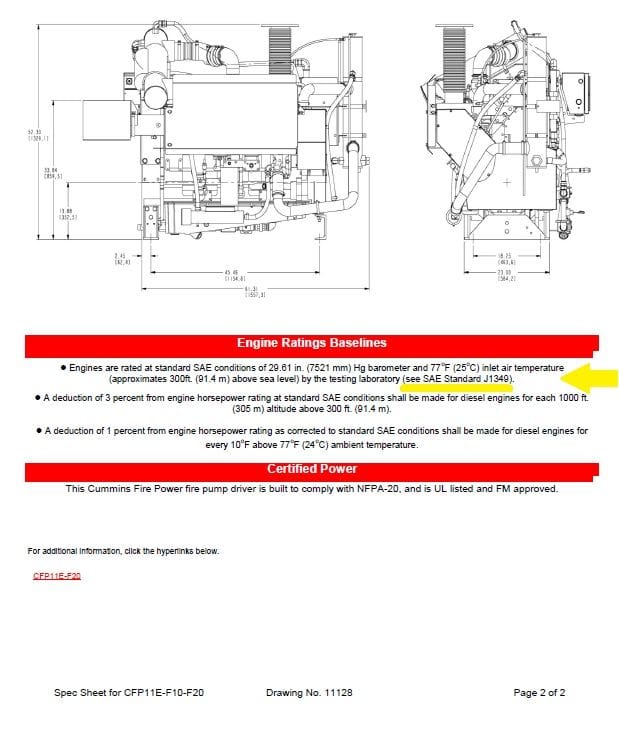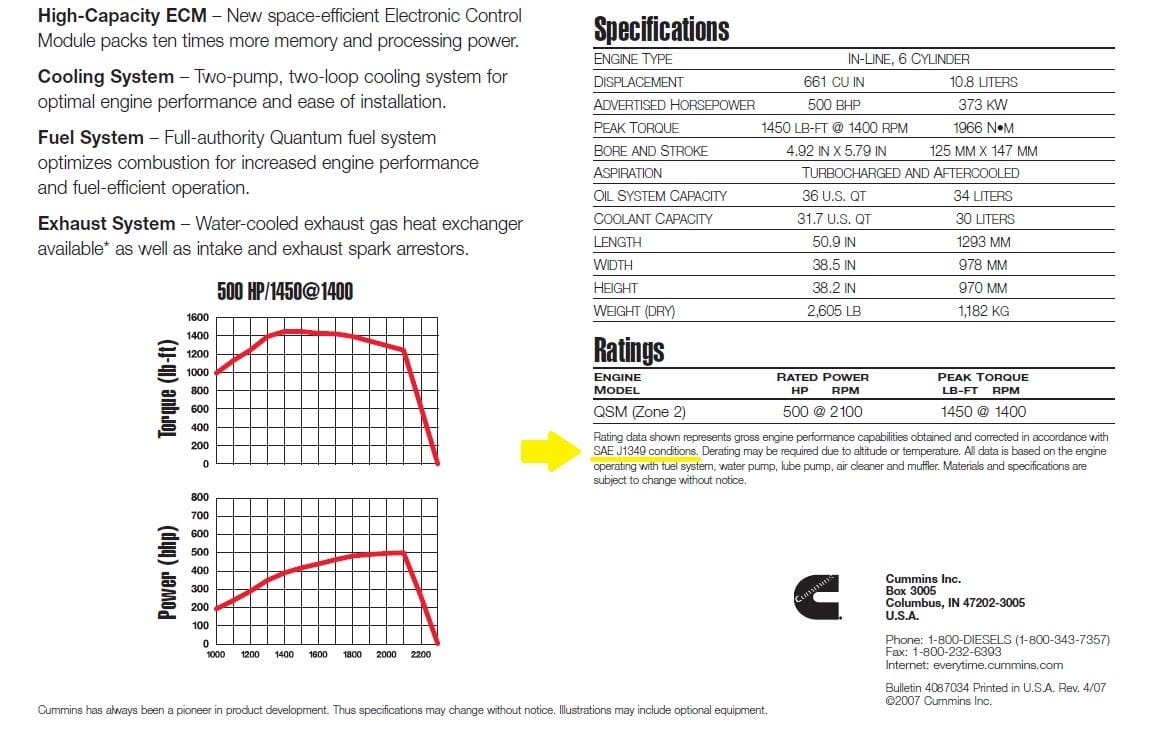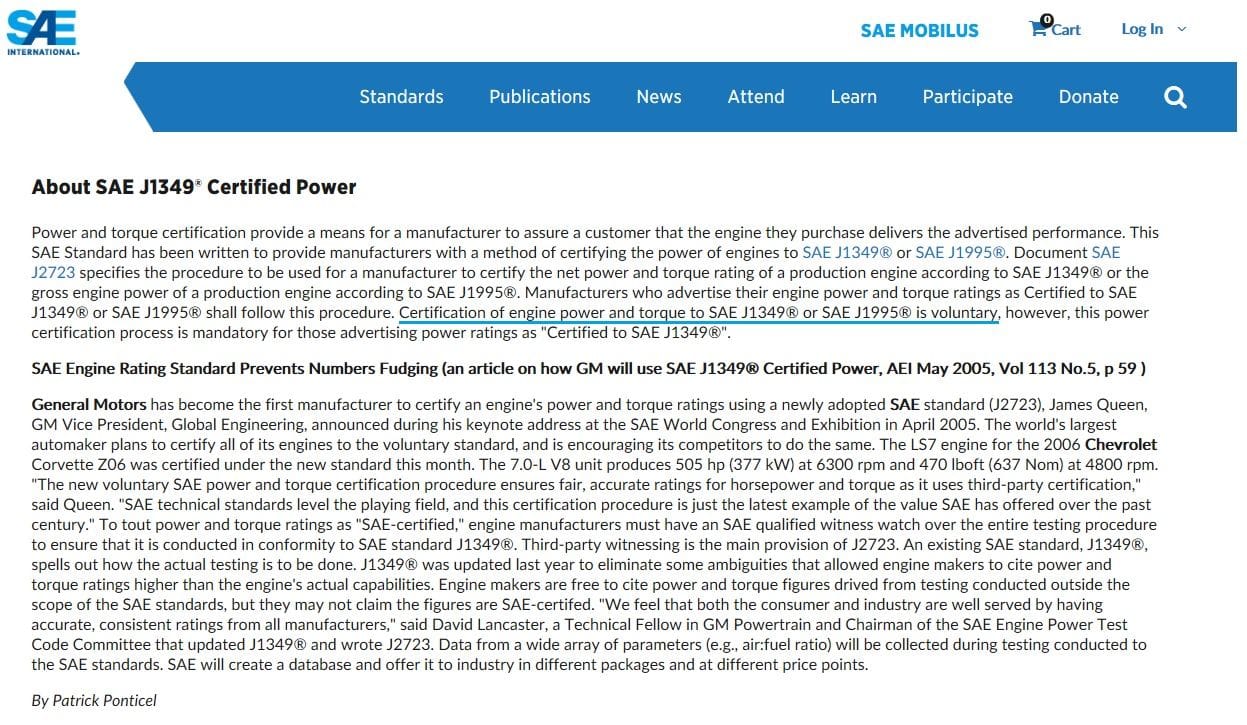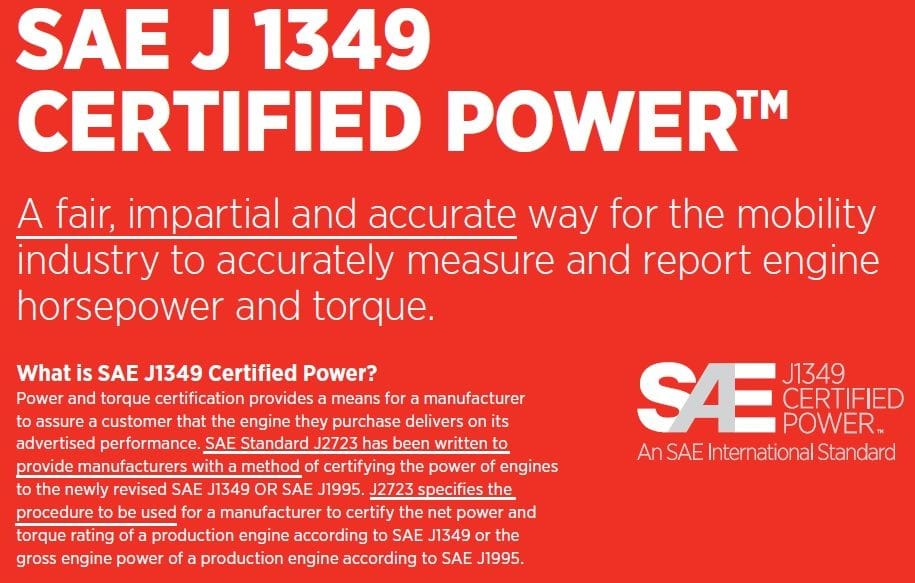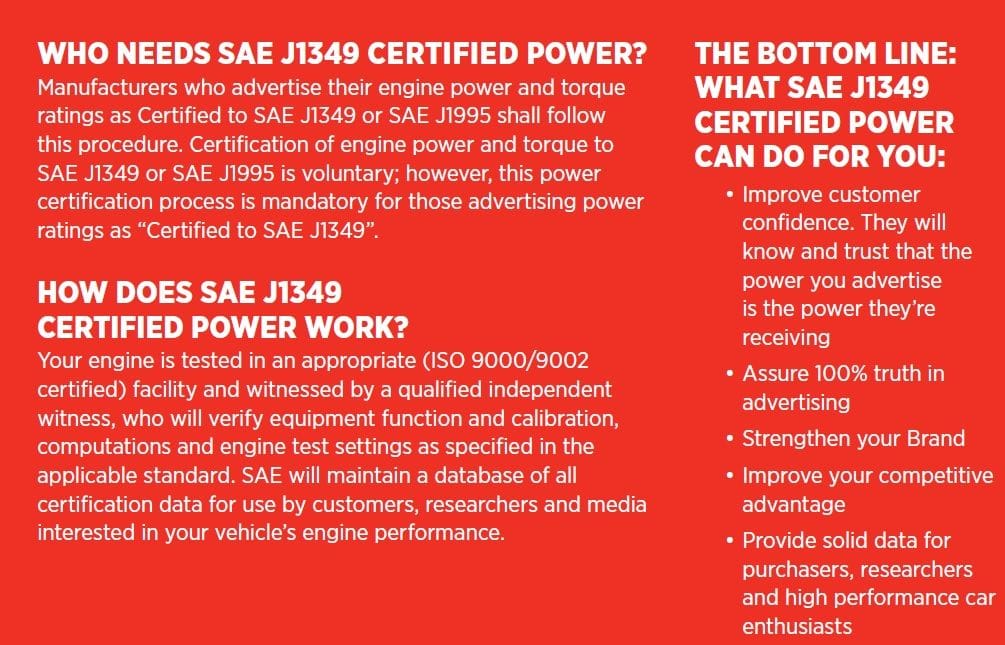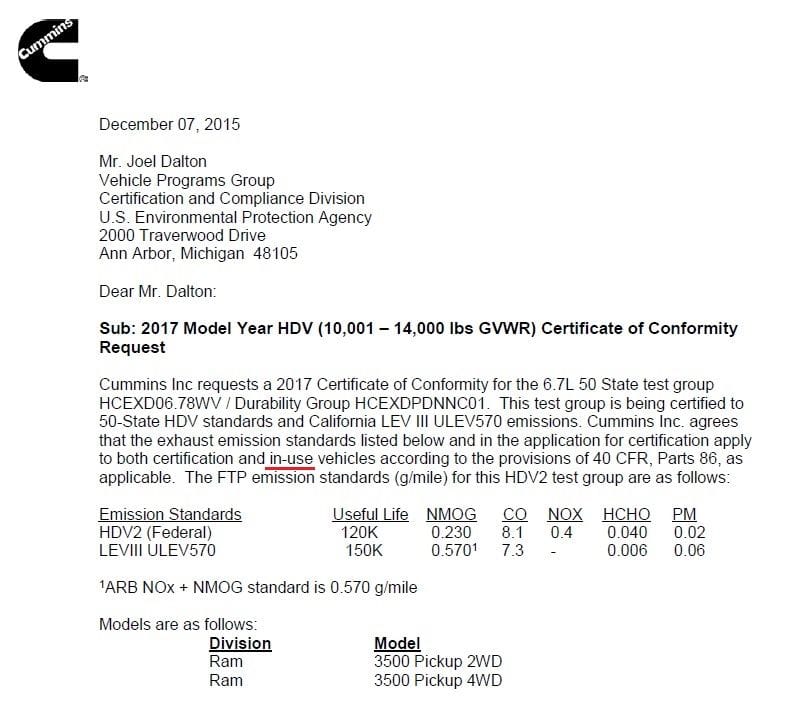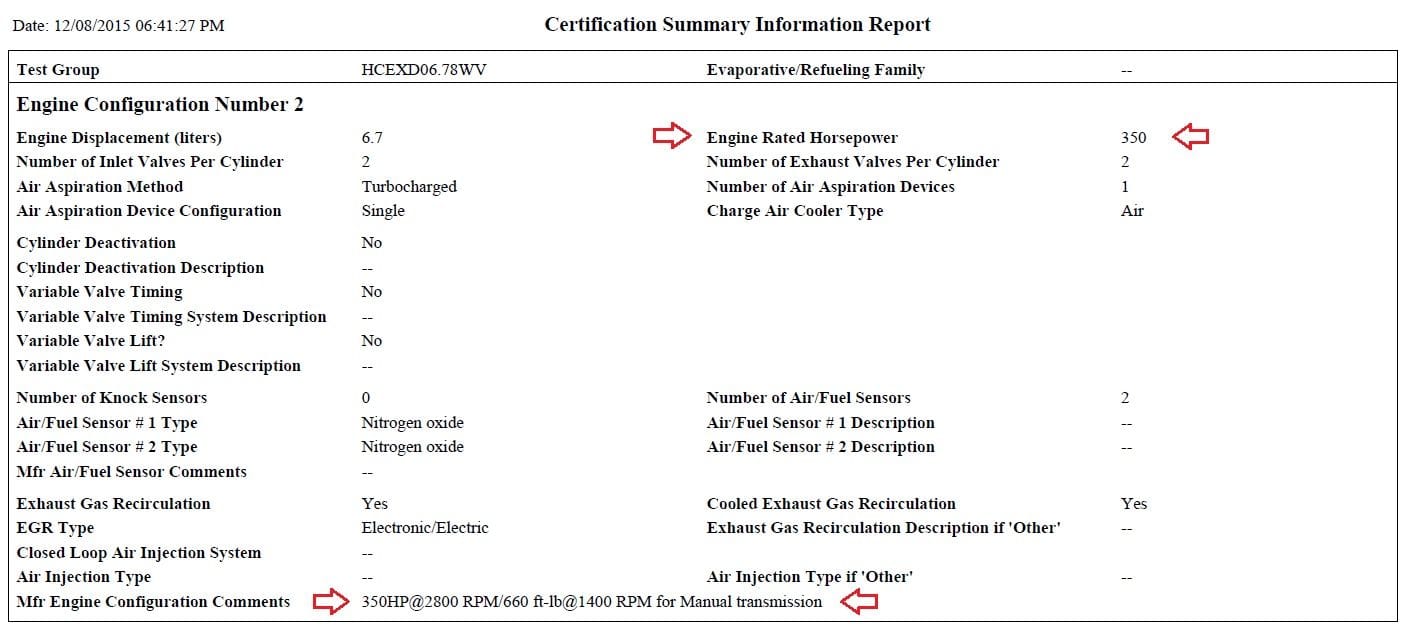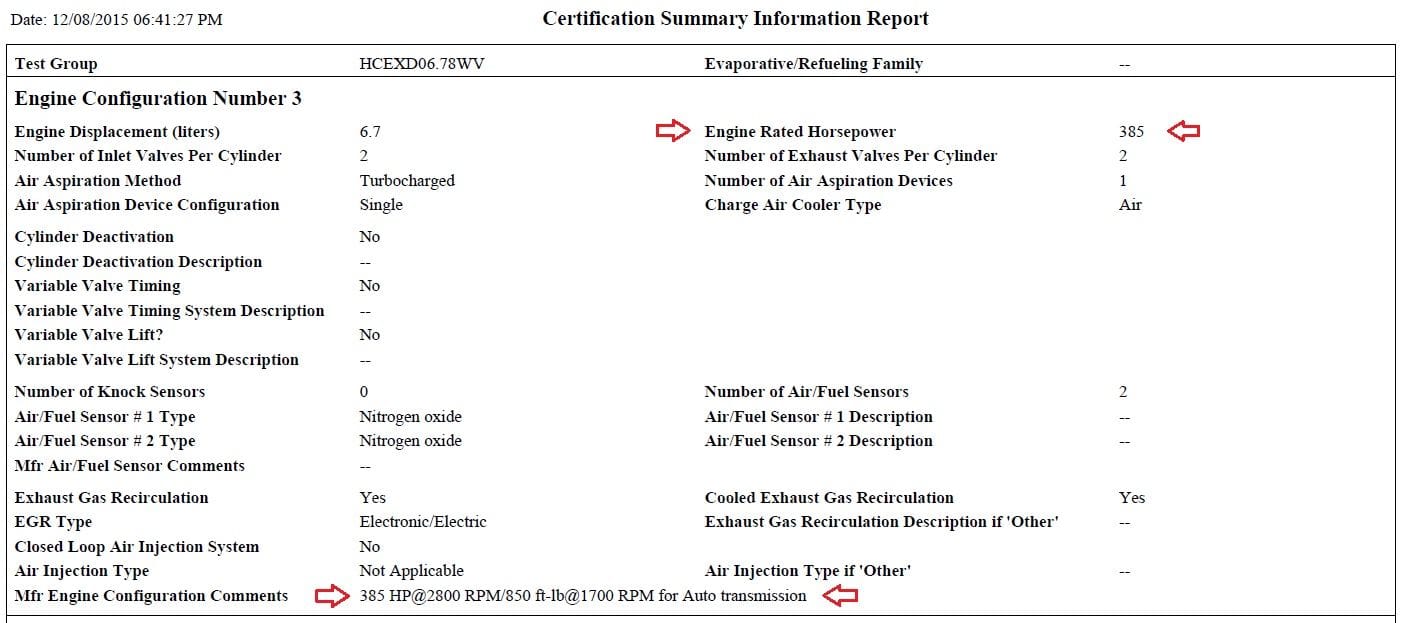- Good Sam Community
- Groups
- Travel Trailer Group
- Forum
- 28,500 lbs Ford vs Ram 1 ton DRW
- Subscribe to RSS Feed
- Mark Topic as New
- Mark Topic as Read
- Float this Topic for Current User
- Bookmark
- Subscribe
- Mute
- Printer Friendly Page
28,500 lbs Ford vs Ram 1 ton DRW
- Mark as New
- Bookmark
- Subscribe
- Mute
- Subscribe to RSS Feed
- Permalink
- Report Inappropriate Content
Apr-21-2018 05:58 AM
$80,115 MSRP Ram 3500 385hp/930tq, 4.10 rear, 5690# payload as configured, 11 brake applications on the way down.
2.7 mpg and 11 min 41 sec on the uphill portion.
$83,015 MSRP Ford F350 450hp/935tq, 4.10 rear, 5400# payload as configured, 10 brake applications on the way down,
2.4 mpg and 11 min 43 sec on the uphill portion.
Basically a tie.
Anyone else surprised the 65hp advantage the Ford has didn't result in a quicker time? It sure did in the drag race they did.
02 Dodge 2500 4x4 5.9L CTD 3.55
07 Dodge 3500 4x4 SRW Mega 5.9L CTD 3.73
14 Ram 2500 4x4 Crew 6.4L Hemi 4.10
06 Chevy 1500 4x4 E-Cab 3.73 5.3L
07 Dodge 1500 5.7L Hemi 3.55 / 2010 Jayco 17z
All above are sold, no longer own an RV
- Labels:
-
Tow Vehicles
- Mark as New
- Bookmark
- Subscribe
- Mute
- Subscribe to RSS Feed
- Permalink
- Report Inappropriate Content
May-04-2018 07:05 AM
Me Again wrote:
The Ford Torque Shift is an excellent transmission.
I have this transmission in our new motorhome and it is excellent.
3 fur kids (Monty, ZuZu and Pinto)
Rainbow bridge (Murphy, Petie, Lola)
- Mark as New
- Bookmark
- Subscribe
- Mute
- Subscribe to RSS Feed
- Permalink
- Report Inappropriate Content
May-03-2018 03:05 PM
Pop-Pop C wrote:
Cummins engines are tried and true. Been around for years. Look at most of the over the road trucks. Asian trans mission is supposed to be good. IMHO the Allison transmission out shines them all. IMO. Have said. Cummins engine, Allison tranny, in a ford body would,be excellent. Good,luck.
Again my opinion.
The Ford Torque Shift is an excellent transmission.
- Mark as New
- Bookmark
- Subscribe
- Mute
- Subscribe to RSS Feed
- Permalink
- Report Inappropriate Content
May-03-2018 11:21 AM
Again my opinion.
- Mark as New
- Bookmark
- Subscribe
- Mute
- Subscribe to RSS Feed
- Permalink
- Report Inappropriate Content
May-03-2018 08:29 AM
shepstone wrote:
What keeps dodge honest? they've been caught cheating on emissions what makes anyone think that they didn't hand TFL a doctored truck.... What happens to these vehicles between testing?
That potentially was for the Ecodiesel and not the Cummins 6.7 the two of which are completely different animals and different subjects altogether.
I don't think it was cheating, it was more of a lack of disclosure of certain bits of code in the Ecodiesel engine software. As far as I know, there has been no circumventing of testing devices during emission testing.
I haven't really kept up with the news on that lately, so...
2004 Prowler 275 CKS (Sold)
2014 Sabre 36QBOK-7 5th wheel
2016 Forest River 8 x 20 Cargo Trailer
- Mark as New
- Bookmark
- Subscribe
- Mute
- Subscribe to RSS Feed
- Permalink
- Report Inappropriate Content
May-03-2018 08:14 AM
shepstone wrote:
What keeps dodge honest? they've been caught cheating on emissions what makes anyone think that they didn't hand TFL a doctored truck.... What happens to these vehicles between testing?
The only vehicle that Ram had emission certification issues with is the Ecodiesel which is designed and built in house along with the emissions equipment. The Cummins and its emissions equipment is NOT designed, built, or tuned by Ram as I have pointed out just a few short posts earlier. So whatever issues emissions Ram had with the Ecodisel cannot be applied to the Cummins.
2016 BMW 2.0L diesel (work and back car)
2023 Jeep Wrangler Rubicon 3.0L Ecodiesel
Highland Ridge Silverstar 378RBS
- Mark as New
- Bookmark
- Subscribe
- Mute
- Subscribe to RSS Feed
- Permalink
- Report Inappropriate Content
May-03-2018 07:57 AM
2010 GMC Savanna 3500 extended 6.0
- Mark as New
- Bookmark
- Subscribe
- Mute
- Subscribe to RSS Feed
- Permalink
- Report Inappropriate Content
May-03-2018 06:46 AM
Flashman wrote:
Interesting but back to an earlier discussion (Same thread). What keeps Ford honest if they don't follow a standard?
Well, yes and no. I have no doubts that Ford follows the J1349 standard, but like most SAE standards, you can play with the correction factors a bit and choose the most optimal parameters to get the highest number possible.
For example, the J1349 must be performed under the following ambient conditions.
a. Air Temperature: 25 °C ± 10 °C
b. Barometric Pressure: 90-105 kPa
c. Humidity: 50 % R.H, +/-20.
d. Wind speed: less than 7 m/s (15 mph)
e. Road Surface: A closed course, with dry, flat, level hard-paved surface.
As you can see, there are tolerances that would make a considerable difference in the rated power output of two identical engines that both used J1349. One that used the best possible scenario to achieve a 400 hp rating while another can use the worst case scenerio to achieve a 350 hp rating. Both would even pass J2723 witness standards since are within J1349 spec.
Regardless of J2723, it mainly comes down to the standards of the manufacturer. Some companies may have even stricter parameters or added parameters. For example, I know at Cummins high altitudes is a factor in their power ratings. They tend to rate and tune their engine power output good for up to say 10k ft above elevation meaning that you will at least get that output up to that elevation before loosing it and might get more power(say another 50 hp at 3k ft) at lower elevations. Another company may choose to advertise advertise the power output at 3k, but you will get less as altitude increases.
There are also other ways that you fudge the numbers to get higher numbers especially with the differences between J1995 and J1349. You can play with these correction factors and still be J2723 certified so it is essentially pointless and only used by SAE to get more money. This is why I say stock numbers mean nothing to me and the only ones who are concerned with them are the fanboys.
2016 BMW 2.0L diesel (work and back car)
2023 Jeep Wrangler Rubicon 3.0L Ecodiesel
Highland Ridge Silverstar 378RBS
- Mark as New
- Bookmark
- Subscribe
- Mute
- Subscribe to RSS Feed
- Permalink
- Report Inappropriate Content
May-02-2018 05:59 PM
BigToe wrote:ShinerBock wrote:
"Cummins uses J1995 just like all engine manufactures that only make an engine and cannot control the intake and exhaust system of the vehicle the engine will be put in."
(Please see yellow arrows in photos below)
Does Cummins identify, on any literature, website, or federally mandated document, that the 6.7L destined for pickups is certified per J1995, similar to how Cummins identified in the brochures of the two different M11s above as being certified per J1349?ShinerBock wrote:
"Even vehicle manufacturers test their engines the same way, but have to go by J1349 since they make the entire vehicle and not just the engine.
Ford makes their own engine, as well as the entire vehicle it goes in. Yet Ford doesn't "have to go by J1349". In fact, Ford refuses to altogether it appears, even while GM embraces a step toward common accountability and independent 3rd party auditing of the procedure and methodology used in the adherence to the standard. In fact, SAE suggests that following either procedure is voluntary, but in order to advertise "Certified to SAE J1349", a manufacturer must use the test procedure outlined in SAE J2723. No such requirement is made for advertising J1995.
Is it possible that Cummins does use J1349, like the older (predating the emergence of SAE J2723) Cummins brochures above indicate... but is prohibited from advertising it, because Cummins, like Ford, doesn't want to pay a third party independent verifier to monitor the testing procedure per SAE J2723?ShinerBock wrote:
"The only reason why SAE came up with the new J2723 requiring a witness was so that they can get money from the manufacturers which in turn makes our vehicles a little more expensive
Perhaps at this point, we should see if we can at least find some common ground that we can agree on, so that I can make better progress in trying to make sense out of what you are suggesting, that you believe I am misinterpreting.
Can we at least agree that SAE J1995 is commonly referred to as the test for gross horsepower without engine driven accessories, exhaust systems, or emissions control devices? And can we also agree that SAE J1349 is commonly referred to as the test for net horsepower, still measured at the flywheel, but inclusive of the induction, exhaust, and after treatment systems as the engine would be expected to be configured in use?
And can we at least agree than neither J1995 nor J1349 take into consideration drivetrain losses? And, unlike some common misconceptions out there on the net, we both can agree than neither J1995 nor J1349 refer to any measurement of horsepower at the wheels, where the rubber meets the road or the dyno rollers?
If we can agree on all that, then can we take another look at that 2017 Ram Cummins 3500HD that is the subject of the video in the original post briefly? I have not seen that video, nor am I the least bit interested in, but I do remain very interested in trying to understand and reconcile what I may or may not have misunderstood you to be suggesting, compared to what I read in the Cummins application to the EPA and CARB for this 6.7L engine, where a horsepower rating, induction system, and exhaust system all must be certified in an "in use" configuration.
Here is the cover letter Cummins sent to the EPA...
I underlined "in use", because that is a critical term in emissions parlance. In use is not gross power of the engine in a vacuum, without regard for induction and exhaust and after treatment. In use is as the engine will be configured for use on the highway, which is what the EPA is concerned about.
So let's look at the alphabet soup that the engine is surrounded by in use:
That will take a moment or two to read. It no doubt took a lot longer to test... but Cummins tested and certified it. Cummins applied for the approval. Cummins will be the VW paying the fines if Cummins got it wrong. This is why the idea that Cummins would certify to the EPA the gross HP level of the motor, while simultaneously certifying that that Gross HP number applies with all the induction, exhaust, and aftertreatment systems included... doesn't make sense to me.
It seems more likely that Cummins would follow the SAE J1349 standard, as Cummins own literature suggests that they are given to do, for the purpose of accurately determining a HP level to a Federal agency that has the power to stop the sale of their vehicles, force a recall and retrofit of their vehicles, and levy a fine of up to $10,000 per vehicle per day, if the certified numbers don't match up with what can be independently verified.
Here are the horsepower levels Cummins submitted with their certification:
Speaking of liability, I can easily see why Cummins wouldn't advertise that they use J1349 to determine net horsepower, since they could then be sued by the SAE, since the SAE owns the rights to the standards. Because of 50 years of bogus claims by vehicle manufacturers in marketing materials, the SAE has had to continue to close the loop holes that manufacturers have found to circumvent the fundamental idea behind a standard. Which is to create a standard. A foundation for fair comparison.
Apparently, manufacturers cannot be trusted to watch the hens without spiriting off with a few eggs, so J2723, requiring an independent witness to verify the manufacturer's adherence to the test procedures outlined in J1349, was developed to re level the playing field once again, with stricter oversight. The cost of that oversight is borne by the manufacturer, who will of course pass it on to the consumer. But to claim adherence to J1349, the witness must be paid to watch.
Otherwise, no advertising J1349. However, that doesn't automatically mean that Cummins is going to report to the EPA some HP numbers that are determined separately from the induction, exhaust, and after treatment systems included in the same certification.
ROFLMAO.......Holy mother of Mariah.
- Mark as New
- Bookmark
- Subscribe
- Mute
- Subscribe to RSS Feed
- Permalink
- Report Inappropriate Content
May-02-2018 04:59 PM
2017 Heartland Torque T29 - Sold.
Couple of Arctic Fox TCs - Sold
- Mark as New
- Bookmark
- Subscribe
- Mute
- Subscribe to RSS Feed
- Permalink
- Report Inappropriate Content
May-02-2018 02:48 PM
- Mark as New
- Bookmark
- Subscribe
- Mute
- Subscribe to RSS Feed
- Permalink
- Report Inappropriate Content
May-02-2018 02:16 PM
You are getting mixed up with the "gross" and "net" power ratings terminology which is one of the reasons I why hate that it is stated that way. When people think of gross, they think that the engine is only being tested. While this used to be the case pre-emissions, this is not the case post emissions.
Instead of thinking of J1995 as "gross" power ratings. Think of it as an "as shipped" engine power rating which includes all devices that make it emissions legal. For example, if you go into Cummins Quickserve and input my 2014 2500s engine serial number, it will show all components that came with an "as shipped" engine to Ram.
You will notice below that the aftertreatment device is apart of the "as shipped" engine.
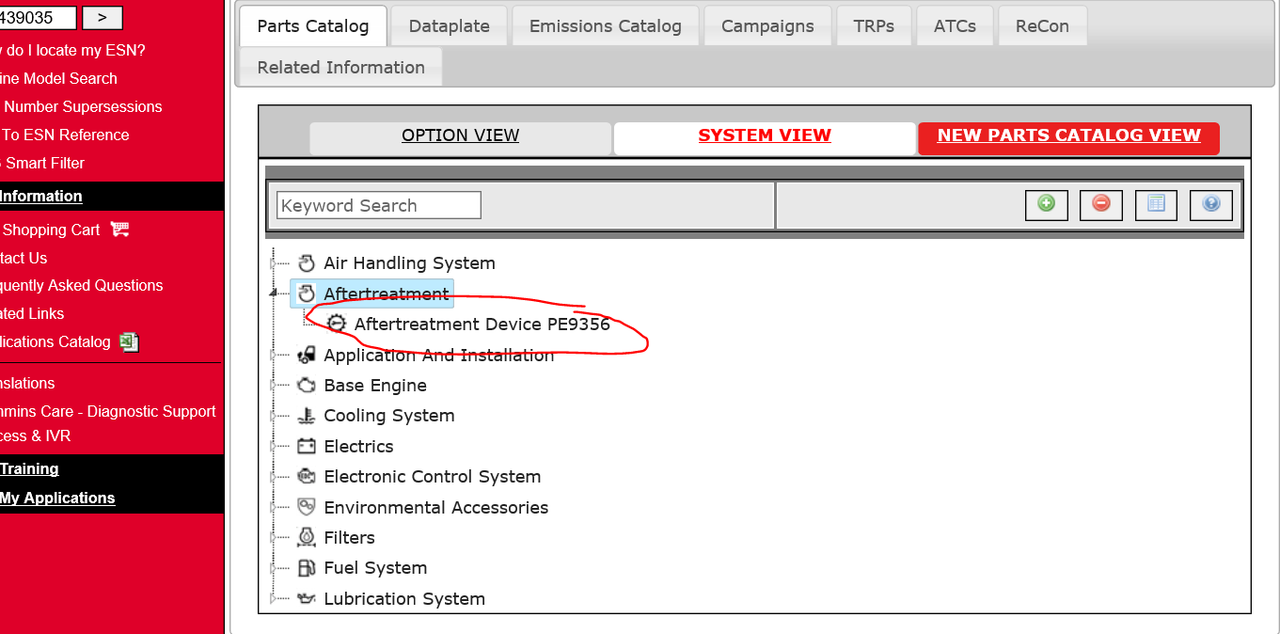
Then if you breakdown the aftertreatment device you will see what catalyst come with the engine.
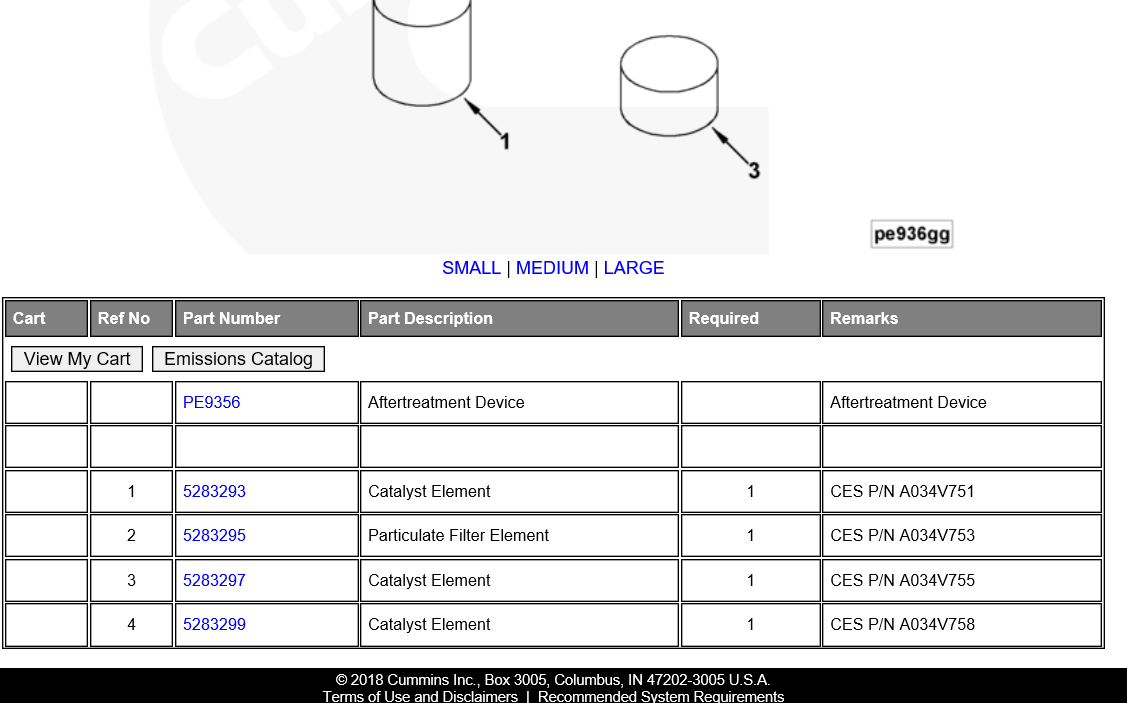
I believe Cummins gets these aftertreatment devices from another supplier for the pickups, but I know they make them themselves for the larger engines, fire pumps, and gen sets.
So think of J1995 as an "as shipped" engine power rating rather than a "gross" power rating.
2016 BMW 2.0L diesel (work and back car)
2023 Jeep Wrangler Rubicon 3.0L Ecodiesel
Highland Ridge Silverstar 378RBS
- Mark as New
- Bookmark
- Subscribe
- Mute
- Subscribe to RSS Feed
- Permalink
- Report Inappropriate Content
May-02-2018 12:35 PM
spoon059 wrote:Grit dog wrote:
Some folks need more hobbies......
No kidding. Even for RV.net, this has gotten way off topic and out of control. Goodness gracious people...
Hope the both of you find a hobby you enjoy, as it might give you less time to criticize others enjoying theirs.
Shinerbock, thank you very much for continuing to take the time to help me understand what you are saying about Cummins engine testing.
Without asking you to be redundant, I'll have to admit I'm still struggling with how Cummins can certify a horsepower level to the EPA using a gross horsepower flywheel test standard (J1995)of the engine only with no appurtenant emissions equipment attached. I just don't understand how that would fly with the feds, so to speak.
It would certainly be understandable if non Californians didn't get why the horsepower number that a diesel engine manufacturer certifies to the EPA is important, and for towing RV's, it isn't important at all.
But when it comes to off road diesel equipment, such as tractors, back hoes, skid steers, skip loaders, graders, pavers, grinders, cranes, pile drivers, drill rigs, generators... an endless list of diesel powered industrial equipment needed to build and maintain the industry and infrastructure that enables folks to enjoy RVing and their yet to be found hobbies... that horsepower number has been extremely important ever since 2010, and will continue to be important, with significant financial impact, over the next 5 or 6 years.
I have to determine the manufacturer's horsepower rating for each piece of equipment in the fleet that I oversee, and add all of the horsepower numbers up. The cumulative amount of horsepower under operation is a significant determining factor in the compliance schedule and Tier level matriculation. The higher the cumulative horsepower under operation, the more significant the financial impact of forced retirement of lower Tier equipment. So it's a big deal to me. More than just a hobby.
I have to rely on the representations of the engine manufacturer, but quite often, I've run into conflicts where two horsepower ratings are provided for the same engine family number, or two engine family numbers are provided for the same engine... not in the books, but on labels permanently affixed to the engine. It is not my intent to drift too far into the weeds on my details, so bringing it back to the discussion at hand...
If an engine manufacturer uses a gross power measurement methodology to determine horsepower for purposes of marketing, and uses a net power measurement methodology for purposes of emissions certification, then I would want to be aware of it, because I would use the smaller of the two numbers in the fleet calculation of cumulative horsepower under operation.
But I do not see this with the on road Cummins diesel engine as fitted to the Ram 3500. There is only one horsepower rating per transmission and calibration submitted. Since that horsepower rating is certified with emissions, I'm still struggling to understand how a test methodology without emissions could be used.
This is why your post caught my eye, on an otherwise typical Ford vs Ram vs Chevy thread. Once you brought up certification standards, my interest perked up. The testing standard issue you raised is different than the dyno cert vs chassis cert discrepancy between chassis cabs (incomplete 450/550/650/750 and 4500/5500/6500) versus pickups (completed 250/350/450 and 2500/3500).
Thanks again for your comments. If you can think of any thing else to say or point a link to, without feeling redundant, I'd enjoy seeing or reading it. In the meantime, I'm still sort of stuck in the position where I began on this, albeit as always with an open mind.
- Mark as New
- Bookmark
- Subscribe
- Mute
- Subscribe to RSS Feed
- Permalink
- Report Inappropriate Content
May-02-2018 11:12 AM
Grit dog wrote:
Some folks need more hobbies......
No kidding. Even for RV.net, this has gotten way off topic and out of control. Goodness gracious people... its almost bad enough to make me log off and get back to work!
2015 Jayco 29QBS
- Mark as New
- Bookmark
- Subscribe
- Mute
- Subscribe to RSS Feed
- Permalink
- Report Inappropriate Content
May-02-2018 08:46 AM
2017 Heartland Torque T29 - Sold.
Couple of Arctic Fox TCs - Sold
